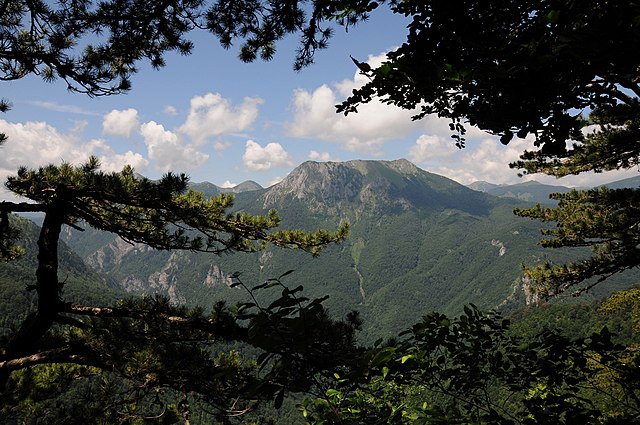The Illyrians were a group of Indo-European-speaking people who inhabited the western Balkan Peninsula in ancient times. They constituted one of the three main Paleo-Balkan populations, along with the Thracians and Greeks.
Queen Teuta of the Ardieai orders the Roman ambassadors to be killed – painted by Augustyn Mirys
Illyrian ship dating from the 8th–7th century BC
The chromolithographic Bronze belt plaque of Vače, Slovenia of the Hallstatt culture
Details of the late antique cathedral complex in Byllis, Albania and the Adriatic sea in the distance.
The Balkans, corresponding partially with the Balkan Peninsula, is a geographical area in southeastern Europe with various geographical and historical definitions. The region takes its name from the Balkan Mountains that stretch throughout the whole of Bulgaria. The Balkan Peninsula is bordered by the Adriatic Sea in the northwest, the Ionian Sea in the southwest, the Aegean Sea in the south, the Turkish straits in the east, and the Black Sea in the northeast. The northern border of the peninsula is variously defined. The highest point of the Balkans is Musala, 2,925 metres (9,596 ft), in the Rila mountain range, Bulgaria.
A definition of the Balkan Peninsula from 1918 largely according to Jovan Cvijić with the north-west demarcation Soča-Vipava-Postojna-Krka-Sava, i.e. the border between the Alps and the Dinaric Mountains
View toward Rila, the highest mountain range of the Balkans and Southeast Europe (2,925 m)
Sutjeska National Park contains Perućica, which is the largest primeval forest in the Balkans, and one of the last remaining in Europe
Lake Skadar is the largest lake in the Balkans and Southern Europe








